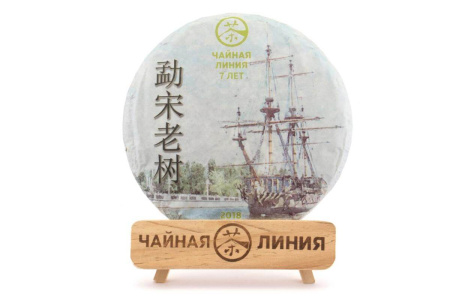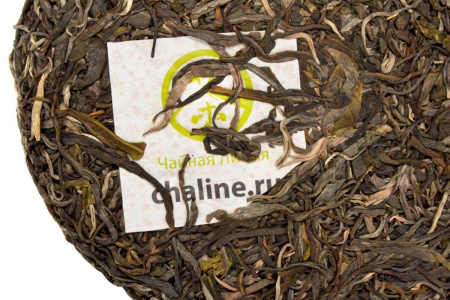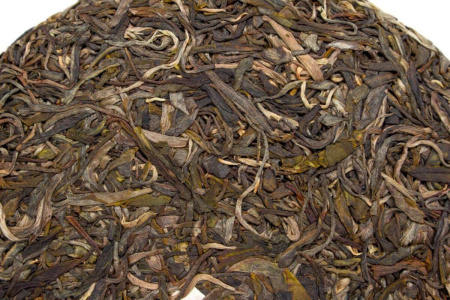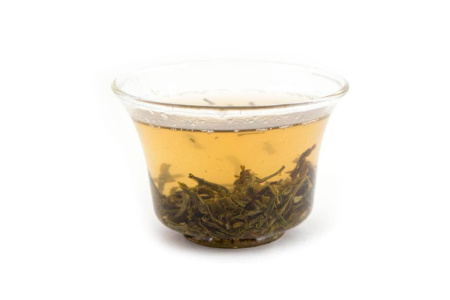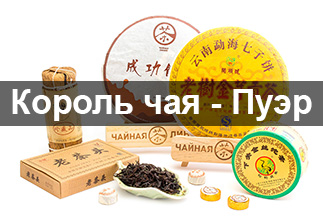-
9 Saturation
-
10 Aftertaste
-
10 Aroma
-
9 Effect
-
9 Balance
-
9 Body
Large, dried leaves have a rich aroma of ripe berries, with distinct hints of wild strawberry, lemongrass, and a hint of strawberry. The aroma also features a sweet and sour camphor note. After rinsing the tea in a gaiwan, a unique, mellow aroma of dark blue grapes, boiled corn, and black currant emerges.
The finished drink has a clear and smooth flavor, revealing notes of baked apples, ripe strawberries, gooseberries, and dried fruit. Pu-erh is free of bitterness and astringency, with no off-flavors. A gaiwan containing 5-7 grams of tea leaves can withstand six full steeps without losing or altering its flavor. The aftertaste is sweet and lingering, with notes of blackcurrant leaves, gooseberries, and ripe berries.
The color of the infusion is deep, light green with a lime tint.
After the first cup, the ship called "Mengsong Laoshu" sets sail on the waves of tea-fueled states. For those seeking a tea capable of inducing that "tea intoxication," this sheng pu-erh will be a real find!
The effect is very powerful. Complete relaxation of the entire body, a slight, pleasant dizziness, complete calm and tranquility. Tea suddenly "stops" a person, removes fuss and anxiety, clears the mind, and helps one see the world with a fresh and rational perspective. It lifts the mood, helping the body rest and recover after a hard day at work. By the end of the tea session, it leaves a strong invigorating effect, giving strength and confidence, immediately stimulating one to get down to business.
This tea is perfect for special ceremonial occasions when one needs to understand oneself and find answers to unresolved issues. This sheng pu-erh can be enjoyed immediately, but over time, it will continually surprise with new, refined nuances of flavor and aroma.
|
Name in Chinese
|
勐宋老树 |
|
Pinyin
|
měngsòng lǎoshù |
|
Translation
|
Old trees from Mengsun |
|
Country
|
China |
|
District
|
Xishuangbanna Dai Autonomous Prefecture |
|
Provinces
|
Yunnan (云南) |
|
Habitat
|
Мэнсун (勐宋, měngsòng) |
|
Manufacturer
|
ООО "Чайная Линия" |
|
Raw material production date
|
2018 |
|
Year of pressing
|
2018 |
|
Pressing form
|
Bing Cha (Cake Tea) |
|
Declared weight, g
|
357 |
|
Tea tree (bush) variety
|
Lao Shu |
- Reviews
- Vkontakte
Pu-erh is one of the most unique types of tea, which only gets better with age. Many people, when they first encounter this tea, wondered: why is pu-erh more often found in pressed form (cakes, bricks, tochas), and not in loose form? The reasons for this are related to both history and the practical aspects of storing and fermenting tea. Despite modern technologies that allow the production of loose pu-erh, the shape of pressed cakes remains unchanged. And pu-erh is more often found on sale in pressed form, for example, in the form of cakes or bricks, and loose pu-erh is less common. We will talk about the reasons for pressing pu-erh into cakes in this article.
Puer is a unique Chinese tea that is distinguished by its depth of taste, complexity of aromas and versatility of aftertaste. Its taste characteristics are formed under the influence of many factors, from growing conditions to the brewing method. Let's look at the main ones.
Over time, some consumers who are part of the country's "tea elite" discover mainland Chinese tea. And only a few get acquainted with Taiwanese varieties. The path of a tea person is usually long and thorny, but ultimately it leads to the King of Teas - puer. But not everyone is able to go all the way from ordinary teas to puer and appreciate its qualities.
The tea ceremony occupies a special place in the centuries-old Eastern tradition. And although the essence of this phenomenon remains constant, the nature and external manifestations of the tea ceremony in different nations have their own national characteristics. In each Chinese province, the tea ceremony and the tea used in it are varied: for example, residents of the southern provinces prefer green tea, and residents of the northern provinces - red tea, in Fujian province they more often use Oolong tea, and in Yunnan province Puer tea is widely known.





